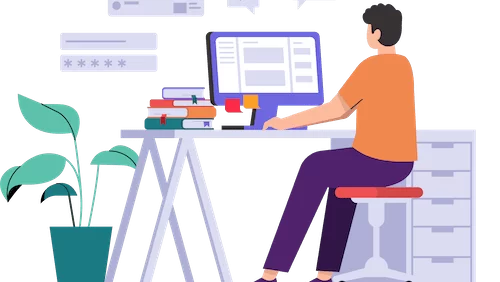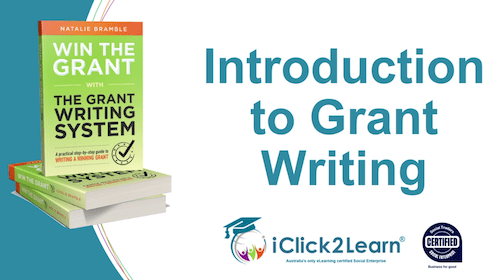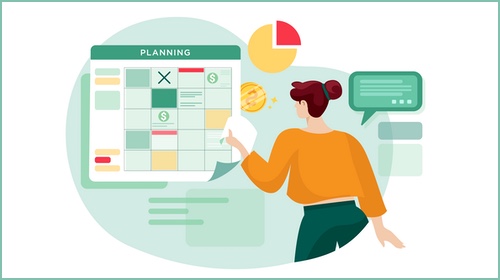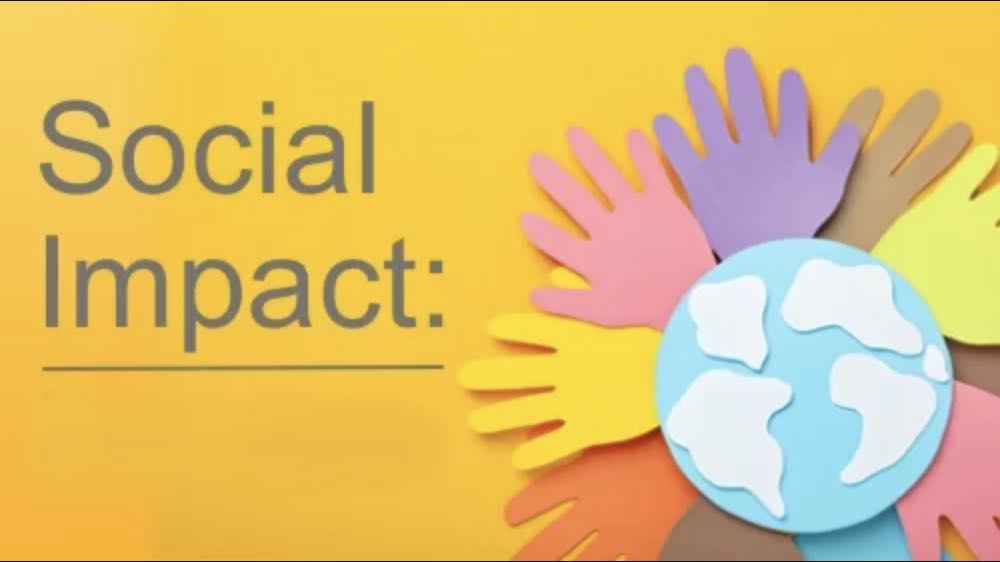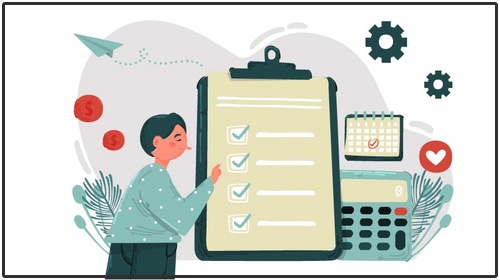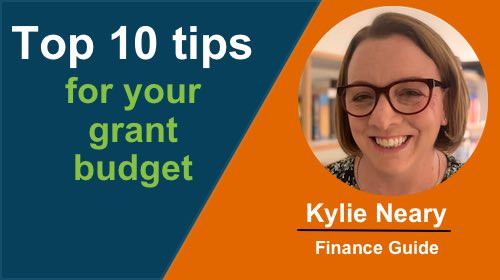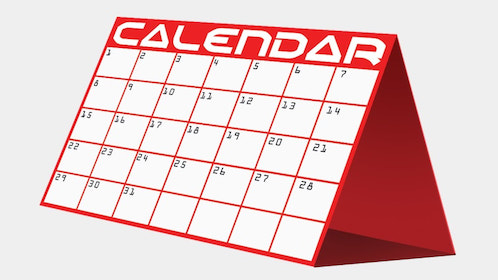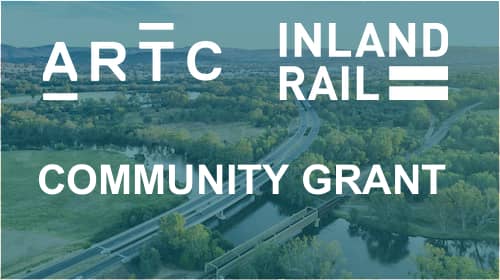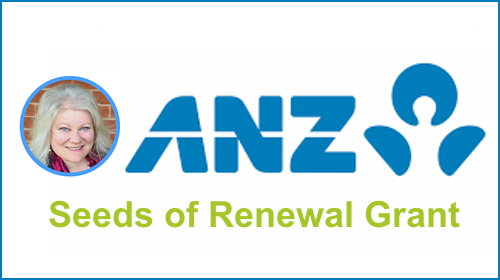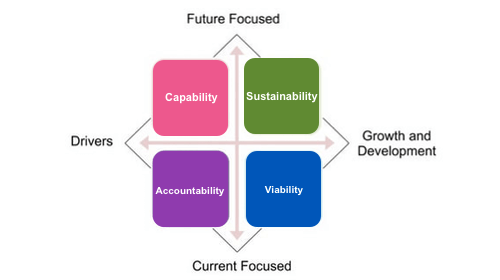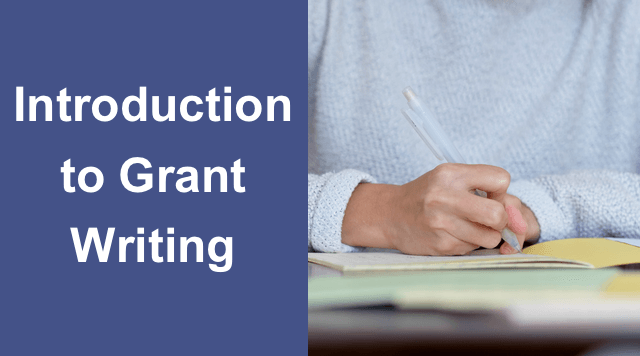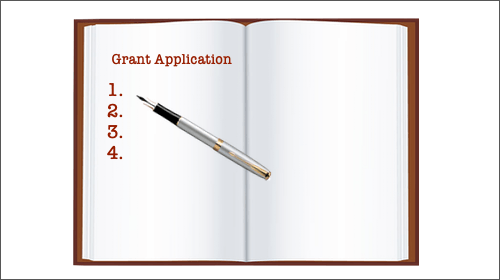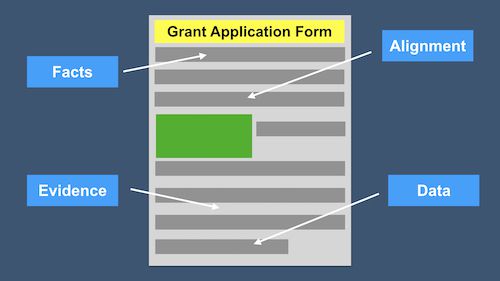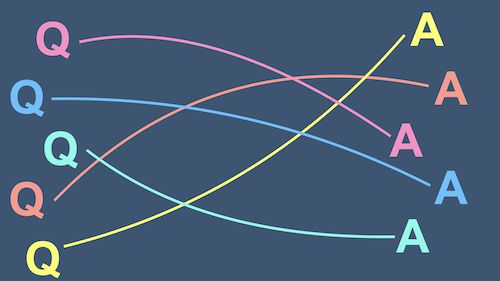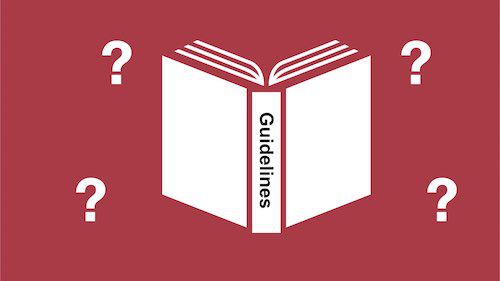NSW Health: Mental Health Sports Fund Grants
In this video, you’ll be guided step-by-step through the NSW Health, Mental Health Sports Funds Grants. Learn best practices from our resident grant writing expert who has raised over 40 million dollars for community projects.
Authored by: Natalie Bramble
Translate Text
Video Timeline
– Application extended closing date: 20th March at 11.59pm AEDT –
The video starts with the eTendering website and grant information:
You’ll explore the grant program, where to find information and the importance of reviewing responses to questions, as it’s updated via Addendums.
Link to the grant information here:

Timeline:
15:26mins Guidelines:
You’ll walk through the guidelines and gain valuable insight into the funding objectives and what types of programs and expenses would be suitable, and which funding requests are ineligible. You’ll also discover information about assessment processes to help you understand how your responses impact your success.
40mins Application form:
Together we’ll review the application form and you’ll discover one of my simple, proven techniques to make sure you answer every part of the question (This is one of the common mistakes grant writers make!!)
48:44mins Budget form:
We’ll finish with a reflection on the budget form and some tips on how to use it.
Looking for more resources?
We have a range of grant writing courses and information to help you. You can read more about the benefits of joining our member only learning library here: Join
The fine print 🙂
This information is general in nature and does not consider your individual organisation. This information is not endorsed by NSW Health. For further information please see our terms and conditions.
Hi, everyone, Natalie Bramble, your not-for-profit guide from iclick2learn.com.au. Today, I wanted to take you through an exciting grant that’s been released. And one that is actually a really simple application form, which is fantastic. This is for sport and recreation associations and it is a New South Wales Health, Mental Health Sports Fund Grant. So, let’s get into it and have a look.
So, the first thing that you will see and we’ll provide this link underneath the video as well. This is a little bit different for those of you who are used to applying for grants, because the first thing that you’ll see is this is actually a eTendering website. So, it is a grant as it is called. It’s just a different platform that they’re using to share this information. So, don’t be concerned about that. So, as you can see the New South Wales Health, Mental Health Sports Grants Fund, really excitingly there’s an investment from New South Wales Health into the wellbeing for sporting bodies.
And there are two you types of funding projects that are actually available. So the first one is a $30,000, what they call fast track grant, which probably means that it’ll take a little quicker to assess. It is a smaller amount of money. And the other one is a standard grant application from 30,000 up to $150,000. So, this is for New South Wales only. And there are a few key things that we need to be aware of. Well, I think one of the first things that I’ll address and I’ve already seen it on some comments from Facebook pages where ministers are actually sharing this is that people are like, “Oh, can we get lights? “Oh, can we do this?” This is not about infrastructure.
This is not about actual physical equipment. There are other grants for this. We’ve got to remember who’s providing the money. This is New South Wales Health. So, it has to really link with the purpose and the strategic objective for which they’re providing the funding for. And it is really important that you do read the information, including the guidelines. And we will have a look at those shortly to really understand what it is they’re looking for. These grants and this is all of the information that’s available on the website but these grants as it says, are of eligible for all New South Wales sporting bodies and it is about projects. And they’ve indicated here that these projects can support the general population or specific priority population groups. So, it needn’t be just about your club members. For example, if it’s something that you wanted to offer more broadly into your community, an opportunity to work with another organisation in partnership, it’s also an opportunity maybe to expand your membership, particularly after lockdown and all these ups and downs, there’s one thing that everybody wants and that’s connection, connection to each other and an ability to resocialize and reengage for those that are able to. So, this is a perfect, this grant that’s being provided is a perfect opportunity for you to do that and to kick off your sports season really well. So, what it means by specific priority population groups is that everyone has a so strategy. They have a basically a document that says these are our strategic objectives, these are the things that we want to achieve. And as part of that strategy, they make sure that they include groups that sometimes are overlooked and sometimes perhaps don’t have as much opportunity or aren’t typically thought of in that regard. So, these are just some examples of where they’ve said that there are specific priority population groups. So, the ones that they’ve identified here, include Aboriginal people, LGBTQI plus people, culturally and linguistically diverse people. And people with, individuals and people with coexisting alcohol and other drugs and mental health issues. So, if I just pick up on perhaps one of these and I’ll give you an example. Let’s look at the call to the cultural linguistically diverse, perhaps it’s a, we’ve got a lot of cultural linguistically diverse, wonderful community members, coming into our regional communities for example. So, it may be that they’ve gotten together and they’re like, “Wow, there’s actually kind of few of us “and we really like to,” and I’m thinking about my local area in Dubbo. “We’d really like to get together “and start our own cricket club” or “we’ve already got a cricket club and we’d like to do, “to reconnect with each other “and to do a little bit of, “sort of wellbeing training for ourselves, “which we know is also going to benefit our community “and our family.” So, it’s those sorts of things. So, you don’t need to necessarily be an organisation that is this type, but it is also working in partnership. So, that cricket group could also then go and work in partnership with another group and do a programme together. So, that’s just a little bit of an example. The important thing here and I’m just going to highlight this for you. The important thing here is that this is about projects that are going to make a positive difference in mental health and wellbeing. So, it projects that make a positive difference in mental health and wellbeing. And of course, as I said this can be for your members, but also the broader community as well, engaging the broader community. Now, very, very specifically, they’ve talked about what funding can be used for. And so it is really important that you do read this and you have a look at this. Now it might be that get together with your group and think about is there something that we could run that adds a lot of value to our members as a project? And here’s some ideas to get you started. I’ll show you the guidelines in a moment where someone might go, “Oh, we can get lights,” where you can say to them, “we know we can’t apply for that sort of thing.” And I’ll show you those shortly. But these sort of give you a little bit of an early indication, if you think this is appropriate for you, before you start looking at the guidelines and getting into the detail. So, you can see here they’ve been very clear around that it’s about either expanding, something you’re already doing. So, you could already have a great programme in place and you want to expand that maybe you’re providing it to your members, but maybe you want to expand that a little bit to prospective members or the broader community. It could be that you’re introducing something new and this could have come out as, you’ve had a few questions from people or a few ideas around how can we get together and build a stronger sort of sense of wellbeing and help our community members, particularly sort of that post-COVID that may still be struggling. So, it’s great. And the other thing course and this is, I will just stop here for a moment and just reinforce the importance of this next or this third dot point here, which I’ll just highlight separately, which is that you can also use funding to team up with a mental health or wellbeing service provider. Or again, there’s that appropriate priority population provider to deliver mental health or wellbeing. There was a project that I was looking at the other day as an example and it was a fantastic project and they actually had someone delivering, so this was an indigenous man and he was delivering, as the trainer, he was delivering some cultural wellbeing training, which everyone based on the comments, just got so much value out of that. So, that’s an example of that. And I will say that generally in these sorts of grants, if it’s about a specific area of expertise, such as we’re talking here about, mental health and wellbeing, we want to make sure that what we are providing to people is appropriate. And that means we do need to bring in those specialists. So, it is important to think about the role of specialists and how they support you to deliver a programme that’s best practise. And that sort of meets those standards of industry professionalism and confidentiality is a lot, particularly if you’ve got people together, sharing information, there’s a lot of framing that they do up front to say to everyone that, to sort of build that safe environment where people feel they can share.
And so it really is worth. And I don’t know, I don’t know, I haven’t, just to give you a bit of an example, this is something usually an assessor would look like, but when I’m just about to share something with you, but I’m not on the assessment team, I haven’t talked to the New South Wales Health Team. I’m just giving you some general information. And generally from an assessment perspective, ’cause I am an assessor on different grants and tenders. And generally from that perspective, when we look at programmes like this, we do look at who’s delivering it. And what’s your experience and knowledge. And there is a question that you asked about capacity, which I’ll show you in the application form. And we’ll talk through that. And that’s something that you tend to look for when, it’s like if I’m going to build something, well, I can assure you I’m not best person to build it. I will get a builder that knows how to do that thing. So, that’s an example. So, the other things of course is on the page is where the location is. So, just check that you are in that location, I’m actually based in Orana or Far West. So, if I was looking at this, I’d be like, “Yes, yes, that’s eligible.” And then what you do is you download the soft copy and you download that information, but here’s something I wanted to share with you that for some of you, you may not have seen before. Generally with this type of procurement, which is called tenders, what happens is that you’re able to ask questions and that’s in the guidelines and I’ll show you that. And what the department then does is they release updates and this is what they call, here we go. These, I’ll just highlight that there for you, they call them addendas and you will see this as an amendment. And so what that means to make sure that their advice and their response, that they’re giving everyone the same response. And they’re making sure that everyone has equal opportunity to have access to this information is you submit a question and then they respond to that question. And what they do regularly is they release these addendas. And so you can see here, the date that they released it and the time. And so you will also need to, if you see any of these, by the time you look at this video and go through the page, it could be a couple, but at the moment there’s one. So, also need to download those as well. The other thing that you need to do, before you submit it and as you’re working on your application is just to make sure that there’s no others. They can provide some insightful information at times. And we will look at that. All right. So, let’s just go and have a look. I’ve just downloaded the information here. You can see on the screen and what you’ll get is a zip file. So, you will also need to, with that zip file, you’ll also need to just unzip it and then you will get access to these documents. You can also see there that I’ve downloaded the addenda, which we’ll look at shortly. So, you get access to these documents.
Now, if you’re applying for the fast track document, the documents that you need to look at, are those that I’ve got highlighted and for accessibility purposes, I am going to use a little bit of descriptive language here as well, just to make sure that those people with vision impairments and low vision can follow along as well. So, if you were looking at the fast track grant application, the $30,000, you would just need to download the fast track application, the budget, the guidelines, the standard agreement conditions, but I’ve also provided a shorter form agreement for you to have a look as well. So, you would only need those documents, the ones that you don’t need, are the standard grant application budget or the grant application. So, you can delete those from your system. So, you don’t get confused, but if you are applying for the between 30,000 and 150,000, the ones that you would remove is the fast track grant application and budget, ’cause you are just working on those other documents, which is the standard. So you do, some people don’t look at the agreements and the conditions. I really do advise that you do look at those and just make sure that you would be happy with those agreements that are contained and what the New South Wales Health Department is actually requiring of you. So, make sure you actually have a look at those standard conditions and the short form grant agreement, because guess what? If you’re successful, you’ll actually be required to sign those. So, you want to make sure, before you all do the work that you are happy with those. So, we are going to have a look at today at the guidelines. We’re also going to have a look at the application form. I’m going to use the fast track application form, which is the zero to $30,000 as an example. And we’re going to look at the budget. Now, the standard grant application form and budget is very similar, very similar questions. I think they’re exactly the same and the budget’s quite similar. It’s just a different form and they just ask a couple of questions that differ, but we are going to look at the one for up to $30,000 today. So, the first thing that we look at is we look at the guidelines. Now, I’ve just opened these up in Adobe and you can see here, the great thing straight away. We know when it opens we’ve, it is open now, but we can also see that we’ve got until the 6th of March to apply. And I know that sounds like a lot of time, but honestly, don’t leave it to the last minute. As an assessor I can tell you that there are a people that spend all this time on grant applications. They’ve left it to the last minute and it’s very rushed. It is stressful cause they’re spending a lot of time and a short period of time doing it.
So, try and give yourself at least a couple of weeks, ’cause you will need to, if particularly you’re introducing something new, you will need to do some planning, around what that looks like. You’ll need to talk to, potentially talk to health providers or other partners in the community that you want to connect with. I’m hoping that you are seeing this a lot earlier, than the 1st of March. So, do give yourself a bit of time. So, in the guidelines, there’s a few things that I’ll look at. Primarily, we’re going to look at the first things, such as who’s eligible, the available funding and the projects and the eligibility. And there are some other conditions that you will need to read. I won’t go through those today, but things like how they handle late applications, when you’ll find out those sorts of things. So, do read those also. All right, so there’s a little bit of information, about the Mental Health Sports Fund Grants programme. And look, I actually did not read this sentence, before I started the video, but as you can see there I referenced, the impact of COVID and there we go. They’re actually saying up front, they recognise that it has had an enormous impact. So it is about supporting some of the things, out of the impact of COVID. So, this just gives you a little bit background as to why they feel that this is appropriate to provide this funding. And you can see that we’ve got some important dates there as well. Now, we start to get into the information that’s really, really critical. Let’s look at programme objectives. Programme objectives are the things that tell you why they’re doing it, but more importantly, what they want to achieve as a result. So, think about it as your motivation, think about it as well it’s a big gift of funding in grants that they’re giving a big investment of funding for this particular thing. So, there are very, very clear reasons why they’re doing it, because they want to achieve some results. You don’t give a lot of money, unless you want to get a return of some sort. And so this is them record the impact and saying too, “We are prepared to invest, “but we want to make sure that it does deliver “for your community and your members.” So, it is important that you are very clear about these. What I generally do when we are applying for grants is I actually break these up and I actually put dot points. I treat these as like a heading and before we sort of start getting into the application, I say to my, if we’ve got a committee for example, I say to my committee, “Okay, we know what our project is, “but how does it, “when we look at this, “how is it community driven?” Well, it’s driven, because it’s coming out of feedback from our members that they want it. And our club’s actually running this. So, it is driven by us.
And when we look at that well supported project. So, how is it well supported? Now, well supported you look at different aspects. You look at well supported professionally. So, we’ve got professionals, but also well supported, because we’ve got a great group of volunteers who are delivering projects and who we’ve done this sort of stuff before, maybe not the wellbeing project, but we’ve delivered projects in the past. And we’ve got the people that we need in order to run the workshops or whatever it might be that you’re looking at. So, to deliver mental health, resilience and wellbeing benefits. So you might say, “All right, if we looked at those three separately,” and you don’t necessarily have to do all of them, but it is about asking if they’ve given you things like this, where they’ve got three areas of focus, mental health, resilience, wellbeing, it’s really important for you to go and just brainstorm. “Well, how does it deliver mental health benefits “to the people that we want to run the project for?” And just brainstorm some of those things, look for some of your, I’m using examples of small committees here, but obviously for some of you, you have programme logic models, you’ve got programme plans, you’ve got that sort of documentation that really does demonstrate benefits and measure results. But obviously we’ve got smaller committees and smaller groups in our communities that would really get a lot of value from this. So, I’m used just using that as an example. So, you would brainstorm those. Mental health, we’ve got resilience, how does it deliver resilience and benefits around that and our wellbeing benefits. Now, whilst it says across the state, if you’re a small local community group, of course you are not across the state. It really, what this is saying is that that New South Wales Health have got, a bucket of money they want to invest, but they want to make sure that has broad impact, across the state. So, that’s from their perspective.
So, you don’t need to worry about that. So, go through each of those points and just think about how does it do this? How does it do this? What are the benefits? Think about these things, how does it develop? And it say where appropriate, develop the cultural competency and cultural safety of sporting groups. I’m just going to pause here for a moment, around that cultural safety and share what I think is an important point. And I was actually working with a state sporting association body last year and we were talking about diversity and inclusion and it’s all well and good to say that we encourage diversity inclusion, but unless we offer culturally safe environments, it’s actually exceptionally hard to get inclusion. For example, if I use inclusion, I told you in the video that I was going to use more descriptive language to help those people that maybe vision impaired, rather than just saying, see what I’m looking at the screen. Well, like that’s either very hard for them if they’ve low vision or they’re not able to, so that’s not inclusive, is it? So, you need to provide an environment of that cultural safety, if you do want to diversify and include. And to be honest, if you’re a sporting body, that’s the strategy, that’s the link to the New South Wales strategy, if you want any support and why wouldn’t we do it if we want healthy, resilient, sustainable communities? So, I just wanted to make a note on that. So, here we’ve got five dot points. So, just go through each of those. Now available funding, 2.8 million which it certainly, it seems like a lot, doesn’t it? Just going to do a quick calculation if we only had organisations that applied for, let’s just say there’s an average grant, that’s given out that’s sort of $65,000. That’s only 43 groups across the state. So, it does sound like a lot, but remember you’re competing with other groups across the state, so it is going to be competitive. There’s a lot of groups that are like, “Yes, this sounds really great. “It’s exactly what we need.”
And there’s going to be a lot of groups, going for smaller amounts of money. And there are some groups, maybe a lot of groups that are going for the bigger amounts. So, it has to be split up. So, why that’s important is it’s saying to you, don’t just think, “Oh, this is a great project.” If you really want to apply for the funding, do the work to make sure that you’ve really thought through your project, that you are actually giving a project that demonstrates value. And more importantly shows, I’ve going to just scroll up for a minute, really shows how you link with these programme objectives. Because remember New South Wales Health, have a strategic priority and investment, they need to show that they’re delivering results. You don’t want to as a funder, funders don’t want to invest in projects that don’t align to their strategy. It’s often one of the first stages that assessors look at is can they demonstrate, can the application demonstrate that it links to our programme objectives? And often in other grants, some of you may have seen this. You’ve actually got specific questions, about how does it link to the objectives. That’s not the case in this grant application. So, the challenge for you is to make sure when you are talking about your project in your application, that it’s actually clear how you are going to deliver a project that meets those objectives. All right, eligibility, make sure you go through that and make sure that you are eligible. So, let’s just look at a club, as I said that local club example that we are giving. So, that’s a perfect example. One thing I will just point out, always take notice if guidelines, bold things like must demonstrate, must be delivered within New South Wales. I know this is going to be a challenge for those organisations that are on the border. Look at a perfect example of sort of a border community is Albury-Wodonga because a lot of sort of organisations, cover Albury-Wodonga area. It’s basically just got a state border through the panel, xx but what it does mean is that it’s going to have to be delivered on the New South Wales border side. So, you really do need to make sure of that. And as I say, yep, just check all of this, check that it does, from this is eligibility. So, check that you do meet all of those things. This is important. I do a little bit of work with an organisation that provides a grant management online system and an application system, and about 30% of applications that are received are actually ineligible. And so what that means is that they don’t meet these things, which is just devastating. You don’t want to do a of that work and then miss out, because you haven’t made sure of something. So, you do really need to make sure that you, these aren’t, “Oh yeah, we possibly made it.” This is “Yes, we definitely meet this requirement,” okay? So, it has to be a absolutely yes. And absolutely I can prove it. So, make sure that you do that. Let’s look at the eligible projects. So, what types of projects are eligible? So, we’re just going to have a look at these dot points and then we’ll have a look at the rest of that. So, “Applicants” and there’s that bold again, “must demonstrate the project proposed has an evidence base “for improving mental health or wellbeing.” Now, let’s just talk about that for a moment. What does an evidence base mean? That’s that results that I mentioned earlier, they want to invest in you, but you need to prove that it can do these things, that it can deliver these results. And that’s where it’s really useful to be working with professionals, because they have that evidence.
A lot of them have already delivered projects and programmes. Grant writing training for example, if I use me as an example, delivering grant writing training, I know it delivers results and I know people get grants as a result of that, because I’m told that. I know the satisfaction rate of that information that people are getting and I know it helps them. So, that’s an example. So, if you want to run a project again, that’s why it’s so important to link with the professionals, because they know what we’re works and they know what doesn’t. And they have that evidence base with them. As I mentioned, for those of you who are already doing this work, you’ve already got that, which is fantastic. You’ll be able to use that in your application. So, this is very clearly giving you an example of the types of projects, like these, aren’t the only projects. These are just examples of the types of projects that are eligible. You also need to look at what projects aren’t eligible, which we will look at in a moment, but these are just giving an example of the types of projects. So we’ve got, I’ll just randomly pick a few, social and emotional wellbeing programmes and activities. So, some of you might have thought, “Oh, well, we wanted to run an event “or a dinner with our members, “celebrating the sport and what we do, “but that might be seen as a party or a social, “which might not be eligible.” But you can see clearly here, they’re saying, “That’s okay.” What’s not okay is that if you don’t have some sort of wellbeing aspect, some resilience, some mental health benefit, that’s the aspect you need. Like, it’s not just a party.
There has to be some benefits that come out of that as a result. So, if you had an event and you had a guest speaker sharing their story and giving people some examples of, this is how they dealt with there situation and what helped them, because that helps people to understand that there are different strategies and different ways that you can approach the challenges that you might be facing individually. Now, that’s something that’s different, isn’t it? You still have that social connection, but you’ve got this added layer, which is about giving people access and exposure to different mental health and wellbeing strategies, that’s going to really support their resilience. So, it’s not just a party. So, think about that. And that’s why it’s so important to go back to those programme objectives and to really be critical and say, “Well, what are the benefits here? “How does it meet these objectives?” So, just have a look through those, the eligible projects.
Now, the other key thing and this is really going to be very particularly looked at in your budget because the budget is where you ask the funder to pay for certain things. And that’s where it’s really, really clear, about what you’re asking them to pay for. So, successful applicants can use the grant funding for the following activities. And so an example is that you can use, and again I’m just going to pick out a couple of things here. And actually I might use this one here. So, operating and administration expenses and a again, note that there is a bold, that are directly related to the delivery of the projects and services. So, you can fund operational and admin expenses, but they have to actually be as a result of delivering, the project that you’re applying for funding. Let’s use an example, marketing of services. So, your marketing, I might actually use that example of the social gathering with the speaker and by the way, how amazing would it be if you had the speaker at the night and then the next day you actually ran a workshop with a group from either the community and your members. It could be a targeted group, one of those priority groups involved as well. I mean, how great would that be also? So, and you had a mental health professional coming, oh my gosh, I’m loving the sound of the project already. So, we want to market the event, the night event, but we also want to market the workshop, but then we do all these other things, like we market membership and we also have our members’ newsletter. So, it’s not going to pay for the things you do, because they’re directly related. It’ll only pay for the things that help you market the night event and the workshop, okay? So it’s really, really make sure that that’s there. Again, I’m not a assessor on this programme and I haven’t even spoken to the New South Wales Health staff. I’ve just saw this grant. And as part of what your not-for-profit guide, iClick2Learn does is we help communities. And we help our community organisations, govern fund and manage. So, we provide a lot of training. We’ve got grant writing training on the website as well, and quite a lot of information. So, and this is all about helping you. So, but what generally happens is that if you’ve put something in a budget, like if you’ve asked them to pay for your newsletter, it’s either going to be one or two things. It’s going to be, “No, they’ve put something in we’ve said we won’t pay for.” So, what happens is you go on the no pile and you don’t want to do that. Just one simple thing, just one mistake that you’ve made in an application. You don’t want it to be on the no pile.
Other times it might be that they haven’t received enough applications. Now, I don’t think that’s going to be a problem in this case. I think they’re going to receive a lot of, a good amount of applications, but in some grant programmes, they don’t receive a lot and maybe they’ll ring you and ask you for more information, but I sincerely doubt that’s going to happen. So, assume that if you don’t follow the instructions, it’s going to be in the no pile and you don’t want to be in the no pile. And that’s even sometimes even before, they look at your responses, because they check for these things first. It’s called a due diligence assessment. All right. So, another really important thing is we look at what types of projects are ineligible. So, if you are designing something new, like if you’ve already got something in place, then you need to look at your project and you need to say, “Well, what things do we maybe need to take out?” Because or what projects won’t work, because they’re not the right type of projects, but if you’re designing something new, you can’t just make it look like something.
And I’ll come back to a comment I saw in a thread where they said, “Oh, what about lights?” And I actually comment and said, “No, it’s not for infrastructure.” And I had at that point, I’d only just briefly looked at it, because I already knew by looking at the information in the programme objectives and my understanding what the programme is, I didn’t go into the detail. I already knew it wasn’t about infrastructure. And here you can see actually there it is. They’ve actually said, “Infrastructure projects are not eligible,” okay? So, make sure when you go through this, that you check that the things that you’re asking for, are in the eligible list here and the things that you are, make sure that you’re not asking for things that are ineligible, because you don’t want to waste all that time and effort. And the worst thing is it’s so demotivating when you realise you’ve made a mistake. So, you want to make sure that you’ve covered off on those things. All right, and there’s some other information, about what needs to be included in the application form. So, make sure that you do read through this. I’m actually going to come back to this.
I’ll show you the application form. We’ll actually come back to this, because it does actually have the, these are the sort of the application questions. So, we’ll come back to that as well. And it tells you what the assessment process is. Ah, here we go. Remember I said earlier that if you do things or if you put things in that are ineligible, they go straight in the no pile and it probably won’t go to the assessor, have a look at here it says, “All applications will undergo an eligibility assessment “to determine they meet the eligibility criteria.” And “Only eligible applications, “will proceed to the assessment against the criteria.” So, there you go. So they’re going to say, “Are they eligible?” Have they done what, have they followed instructions? Are they asking for things that are eligible? No, they’ve put in things that we’re not going to pay for, like lights or whatever it might be. Marketing for the newsletter, not what we are doing. So again, it’s so important, because you want to make sure that you get to that assessment process. You don’t want to miss out on what they’ve called an eligibility assessment, which is sort of the due diligence. You don’t want a no then. You want to be assessed, because that means you’ve got a chance.
So, yeah. So, this is some information that tells you about the assessment process and what they’re going to do and how they’re going to do it. And you’ve got some definitions there. So, and there’s some helpful information as I said, that you can read through about what happens. But what we are going to do now is we’re going to have a look at the application form. And then I will come back to this. Actually, before I move to the application form, I did mention that you also need to look at relevant, updated information that they release from time to time. And it means that someone has asked a question and you can actually, what this addenda one, it that was released on the 8th of February asks is it actually does ask, if they’re currently building an exercise facility and they’re saying, “Oh, is this eligible?” Now, I have to say to you as a an assessor and someone who works with funders on grant programmes, this is why it’s so important to read the guidelines, before you ask questions and to make sure, because it says quite clearly, infrastructure projects are not eligible. So, don’t as much as possible unless you’re, because we do have English literacy barriers, et cetera. And if there is some confusion around that, because you are just not sure what they mean, then make sure they understand that you’re asking the question because of that. But try not to ask questions like this that are in the guidelines already. That’s what they’ve said in the guidelines. That’s why it’s so important to go through each dot point and make sure. And you can see here that they’ve said, funding for infrastructure projects are not eligible. So, and that’s, here we go as per the guidelines. So, make sure again, you really do look at the guidelines. All right, we’re now looking at the fast track application form.
There’s a lot of standard questions. They’ve got also questions around your eligibility. There’s that question we talked about? I gave that example about Albury-Wodonga where they said, where in New South Wales will your project be delivered? Now, if I put Wodonga in there, guess what’s happening? I’m just saying that I’m delivering this in another state. So, it’s not going to actually work, is it? So, that’s where you would put Albury. If you make that mistake about Wodonga, what will happen is I’ll say no. So, make sure that you check these things. And so when we go, I just want to possibly make a note on one point, before we look at the questions and that is the referees. Provide details of two referees who we can contact if required. If you already, if you’re already delivering something like this, this wellbeing project, ideally it’d be beneficial to think about really strategically the referees that you are going to include. So, perhaps you rent a programme and it just changed someone’s life and just really helped them. And it might had a significant impact. That’d be brilliant referee to include, but also think about, a sort of a moral strategic, high level referee, where it might be someone that you have worked with, like a mental health professional for example to develop it. If you haven’t done this before and it’s new, then think about the projects that you’ve delivered in the past.
And, just think about who might be appropriate to share as a referee. So, it certainly could be someone that you’ve worked with in the past. Maybe it’s one of the priority groups you’ve worked with on a project and they’re joining you on this project, because they’ve also got a lot of challenges with their members, that’s why they want to want to come together. So, and you’ve already done things together and it’s made a big difference. So yeah, that’d be great referee as well. The key thing here is don’t use people that just think you’re fabulous, but they don’t have a lot of substance to why they think you’re fabulous. Really think about using people that can help support your application, that can help show the assessors and the New South Wales Health why they fund you, because you know what you’re doing and you deliver programmes that deliver results, okay? They’re the sorts of referees that would be ideal. So, we are now looking at the grant application for the fast track. We’re just going to have a look at the questions. Now I did mention earlier, we might just stick to the application form, rather than going back to the guidelines, because there is what’s called hints.
So, they actually tell you in the form, they give you the question, but then they give you information. I call them hints, that help you understand how you address the question. And you can see here in the guideline for those of you that have the guidelines in front of you, this is actually included in the guideline. The thing that the guidelines do show, which is why it’s so useful for you to have a look at it is they do actually show the bolded parts and remember bolded parts, for guidelines that put anything in bold. It means they want you to pay attention to those things. So, the project description, provide a clear description of, and this is the bold bit, what the funds will be used for, okay? They need to understand where are you spending the money. Now, remember those funds have to what? They have to meet the eligible costs, okay? So here we go. The types of projects that are eligible and you can’t ask for things that are not eligible, okay? So, make sure you check that, alright? So, you can use the guidelines. It does provide it in bold. The form itself, they’re sort of mostly all in bold or not bold, but it just helps, “Have I done that?” So, use this as a little checklist. Have I made sure that it’s clear what the funds will be used for? Have I made sure that it’s clear that the project is based on evidence, okay? So, here’s the project description.
We’re now looking at the application form and you can see that, that information in the guidelines is the information in the application form. So, we will go back and we’ll walk through the guidelines and have a look. It’s just what I’m doing now for those that have the screen in front of you and are able to see is just showing you the forms. So, you’ve got 250 words. I’m just going to show you a little trick. Here’s what I do when I look at questions. Here we go. So, there are actually two parts to this question. What I’ve done is I’ve broken down, provide a clear description of what the funds will be used for. That’s the first part. The second part is including how the project is based on evidence, that mental health or social and emotional wellbeing, will be supported or improved. Now, they’re the two parts. In our grant writing training, we actually show you how to do this more strategically, but this is a good, simple example for you now in the quick amount of time that we have. ‘Cause I’m trying not to make this video too long. I could talk for hours. There’s so much that I could share with you. about how to do this, but we’ll keep it, we’ll try and keep it short for you.
So, what you would do is you would make sure here, provide a clear description, so it has to be clear about what the funds will be used for. So, this has to link to eligibility. So, make sure funds linked the eligibility criteria or the eligibility note in the guidelines. I think it said projects that are eligible, I think was the wording. So, make sure it links to the eligible criteria there. And now here we go based on evidence. So, how do I show that it’s based on evidence, okay? That’s one, I need to show that. I also need to show that mental health and I’m going to break these down into separate ones, because there’s the word or, mental health and then social and emotional wellbeing. And then I’m going to say, “Well, how are these things supported “and how are these improved,” okay? So, I’m going to do that supported and improved for each one. So, that helps me understand that if our project does have social and emotional, wellbeing aspects, well, how is that supported? How are our members supported with that? But importantly, how does that help them improve? So, it helps you understand the layers if you like to the question. So, I hope that has helped you look at, it’s just one simple example of one question. I hope that’s helped you look at that. There’s a lot of other questions obviously there that you’ll need to look at. We are just going to, and that should give you a really solid foundation, as to how to look at the questions and how to make sure that you’re responding appropriately. The one thing actually, before I move onto the budget I will say and this is a statement. It’s my statement. Stats and stories, support your statements.
So, where it says based on evidence, what are your statistics to demonstrate that? And what are the stories and stories could be, keep them short, ’cause you’ve only got 250 words. And again our training helps you break down how you allocate those words. But, if you look at allocating words, even if you said, “Okay, we are going to, “a third of the words, “we’re going to allocate to the eligibility, “what the funds are going to be used for. “And the other two thirds of the words are going to be used “for this second part of the question.” So, think about that. What are the stories? And so it’s not a big, long winded testimonial. It might be 10 words that somebody has said and you can use those, okay? So, think about how they help support your application. Now, looking at the budget and I apologise for this. It may be a little bit hard to see, it’s a light green and forgive me, but I hopefully am going to be able to change. No. Okay. So, they’ve locked the spreadsheet. I’m sorry, I can’t actually change the colour of this at all. So, I’m just going to read this out. It might be a bit hard to see. It’s a light green on white, so that it’s a very light contrast. I’m just going to have a look at here. So, they’ve actually got instructions here. So, you insert the amount here. So, there’s the grant amount.
So, how much am I looking at? I could be looking at $23,000. So, that’s where I put the grant amount. Now, see how it automatically sub totals. And you can see that they’ve put what’s called formulas in there and that helps make sure that you are giving them a balanced budget. So, you’ve got to include the funding sources, so how you’ll get funding and you’ve got to then include the direct costs. So, all of the costs that the project will pay for. Now, remember to make sure when you are looking at costs, particularly when you’re asking them to pay for things, you go back and you have a look at the budget and make sure that it’s eligible. All right. And the questions as I’ve said, go through the guidelines. I’ve given you an example when we looked at the questions of breaking it down, of having a look at those areas, particularly that are bolded. I think that’s all we’ve got time for today. So, yeah, and iClick2Learn is a certified social enterprise, we deliver training and we support our community organisations, helping them to govern fund and manage. You provide, as volunteers and staff, you provide a lot of value to our community and thank you for doing all the work that you do. And we want to support you as much as possible to make sure that you do that. For any of you that are interested in further learning, if you head onto iclick2learn.com.au, we have a on-demand learning library.
It’s a membership library that you can feel free to have a look at. It’s only $4.40 month. And there are over 300 videos. We’ve got grant writing courses that you can do as well to help you with this. And we also have regular monthly member only workshops and events as well. It’s been great chatting with you. I hope this has helped you, even if you just look at this, this is part of what we do as a social enterprise is provide this knowledge. So, I hope this has helped you think about the New South Wales Mental Health Sports Fund Grant and good luck.
Related posts
Introduction to Grant Writing [Course]
Introduction to Grant Writing [Course]
Developing a Fundraising Plan
Create a Sponsorship Plan
Social Impact
Developing a Funding Ready Project
Approving Your Budget
Top 10 tips for your grant budget
3 Ways to Find Grants Funds
Develop Your Grants Calendar
How to win a Inland Rail Community Grant
ANZ Seeds of Renewal Grant Writing 2021
How to apply for a Supplementary Volunteer Grant [Webinar]
5 Step Formula To A Winning Submission [Course]
Four Abilities for Grants
Introduction to Grant Writing
How to Write a Competitive Grant Application and Stand out From the Crowd
How to Structure your Grant Application Response
Why you Need to Support Your Statements in Your Grant Application
How to Answer Grant Application Questions
How to Understand Grant Guidelines!
An Intro to Writing Grant Submissions
Avoid the 6 Common Mistakes Submission Writers Make [Course]
- Tags | Grants, Grants and Tenders
